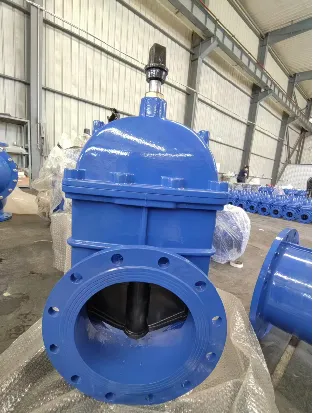gate and butterfly valves
Gate and Butterfly Valves A Comprehensive Overview
In various industrial applications, valves serve crucial functions in the regulation and control of fluid flow. Among the myriad types of valves available, gate valves and butterfly valves are two prominent choices, each with unique characteristics and applications.
Gate Valves
Gate valves, often referred to as knife valves, are designed for fully opening or fully closing the flow of fluid. The mechanism consists of a wedge-shaped gate that moves up and down within the valve body. When the gate is fully raised, the fluid can flow freely, resulting in negligible pressure drop. Conversely, when the gate is lowered, it securely blocks the flow path.
One of the primary advantages of gate valves is their ability to provide a tight seal, making them ideal for applications requiring minimal leakage. They are typically used in water supply systems, wastewater treatment plants, and in various oil and gas applications. However, gate valves are not well-suited for throttling purposes; they are designed strictly for on-off control. As a result, frequent opening and closing can lead to erosion and wear on the gate.
Butterfly Valves
Butterfly valves operate on a completely different principle. They consist of a circular disc that rotates around a fixed axis within the valve body. The rotation of the disc allows for quick and easy control of flow. When the disc is parallel to the flow path, the valve is fully open, and when the disc is turned perpendicular to the flow, it is fully closed.
gate and butterfly valves

One significant advantage of butterfly valves is their compact design, which makes them suitable for installations where space is limited. They can be used in large pipe systems, such as those found in HVAC (heating, ventilation, and air conditioning) systems, chemical processing, and food and beverage industries. Butterfly valves are also relatively lightweight compared to gate valves, making them easier to install and maintain.
Comparison and Applications
When choosing between gate and butterfly valves, several factors need to be considered, including the application requirements, space constraints, and budget. Gate valves, with their robust structure and excellent sealing capability, are well-suited for applications that require infrequent but reliable operation. They are commonly employed in pipeline systems where flow control is paramount.
On the other hand, butterfly valves are preferable in applications where rapid operation and flow regulation are essential. Their versatility allows them to be utilized in systems that require continuous flow control, such as in mixing processes or where quick adjustments are needed for pressure regulation.
In terms of cost efficiency, butterfly valves generally have a lower initial investment and require less maintenance compared to gate valves. However, gate valves may offer a longer service life in certain high-pressure applications, making them a more economical choice over time for specific uses.
Conclusion
In summary, both gate and butterfly valves play vital roles in fluid control across various industries. Understanding their unique features, advantages, and suitable applications is crucial for engineers and operators in selecting the right valve type for their specific needs. While gate valves are ideal for on-off applications with a strong sealing requirement, butterfly valves excel in scenarios demanding quick operation and space efficiency. Ultimately, the choice between these two valves will depend on the operational conditions and requirements of the system in question.
-
The Smarter Choice for Pedestrian AreasNewsJun.30,2025
-
The Gold Standard in Round Drain CoversNewsJun.30,2025
-
The Gold Standard in Manhole Cover SystemsNewsJun.30,2025
-
Superior Drainage Solutions with Premium Gully GratesNewsJun.30,2025
-
Superior Drainage Solutions for Global InfrastructureNewsJun.30,2025
-
Square Manhole Solutions for Modern InfrastructureNewsJun.30,2025
-
Premium Manhole Covers for Modern InfrastructureNewsJun.30,2025
